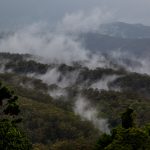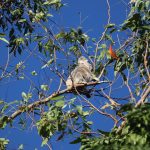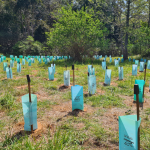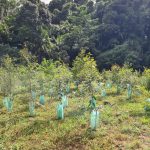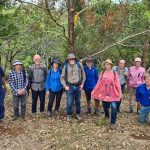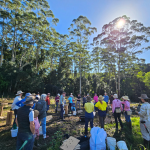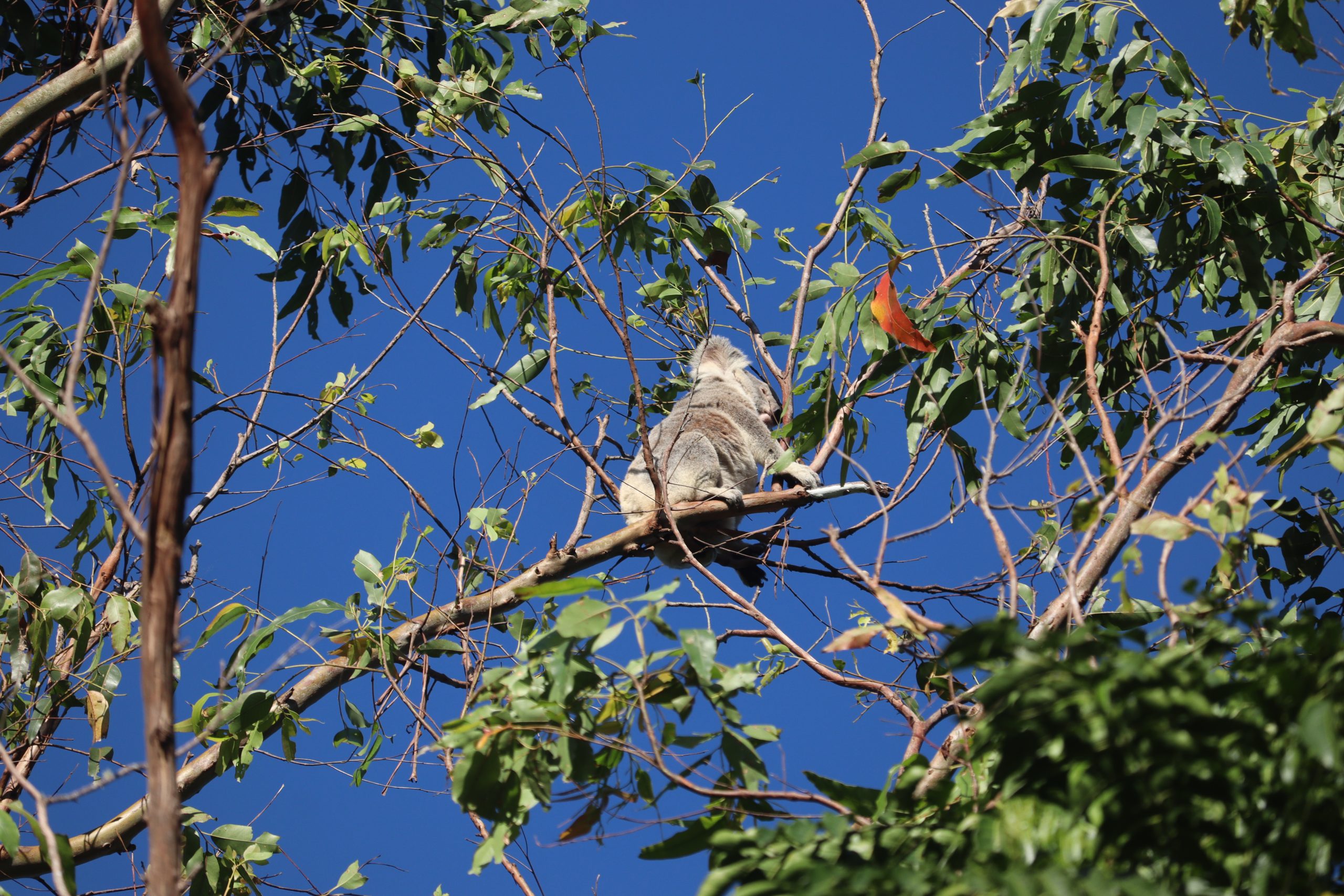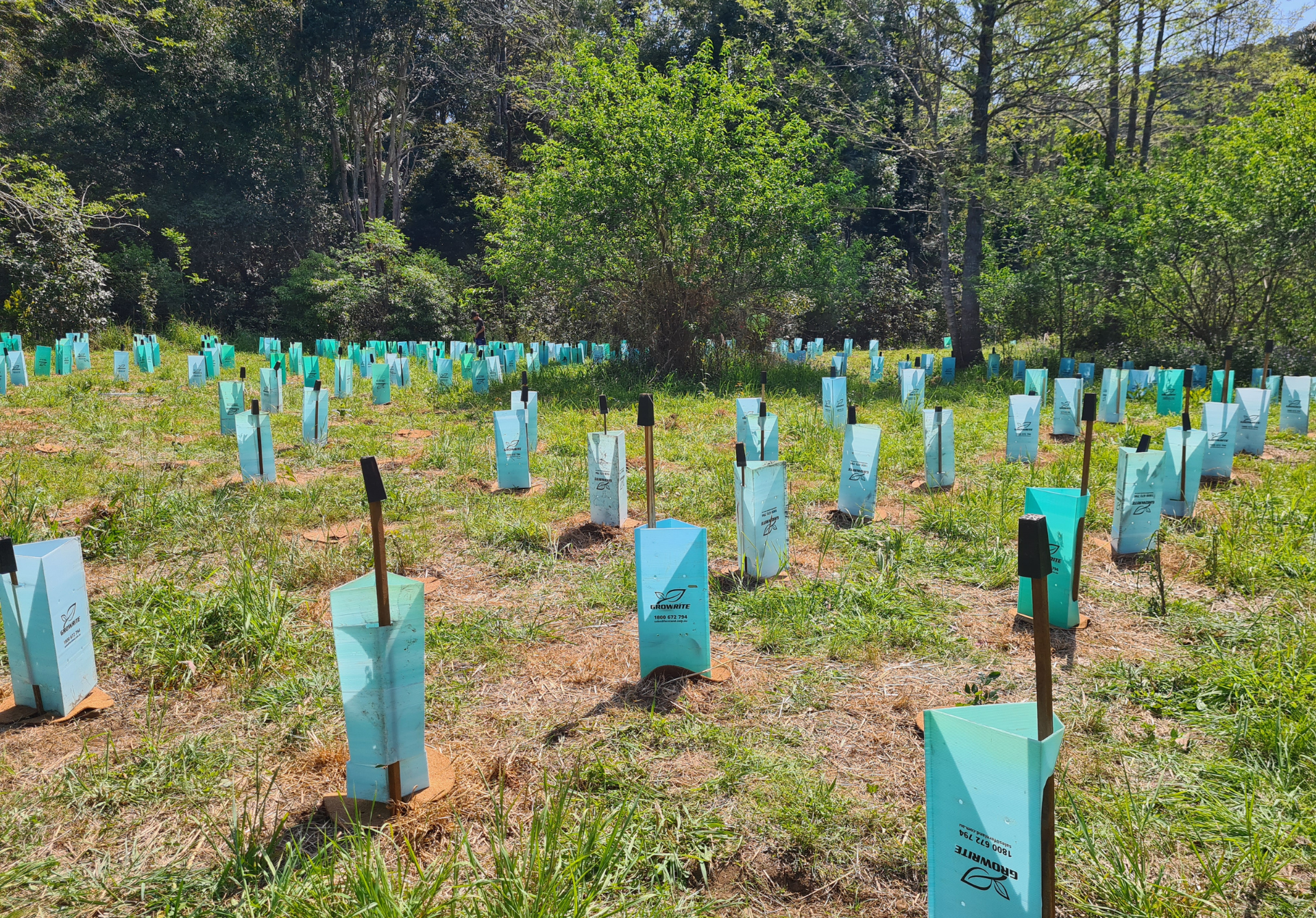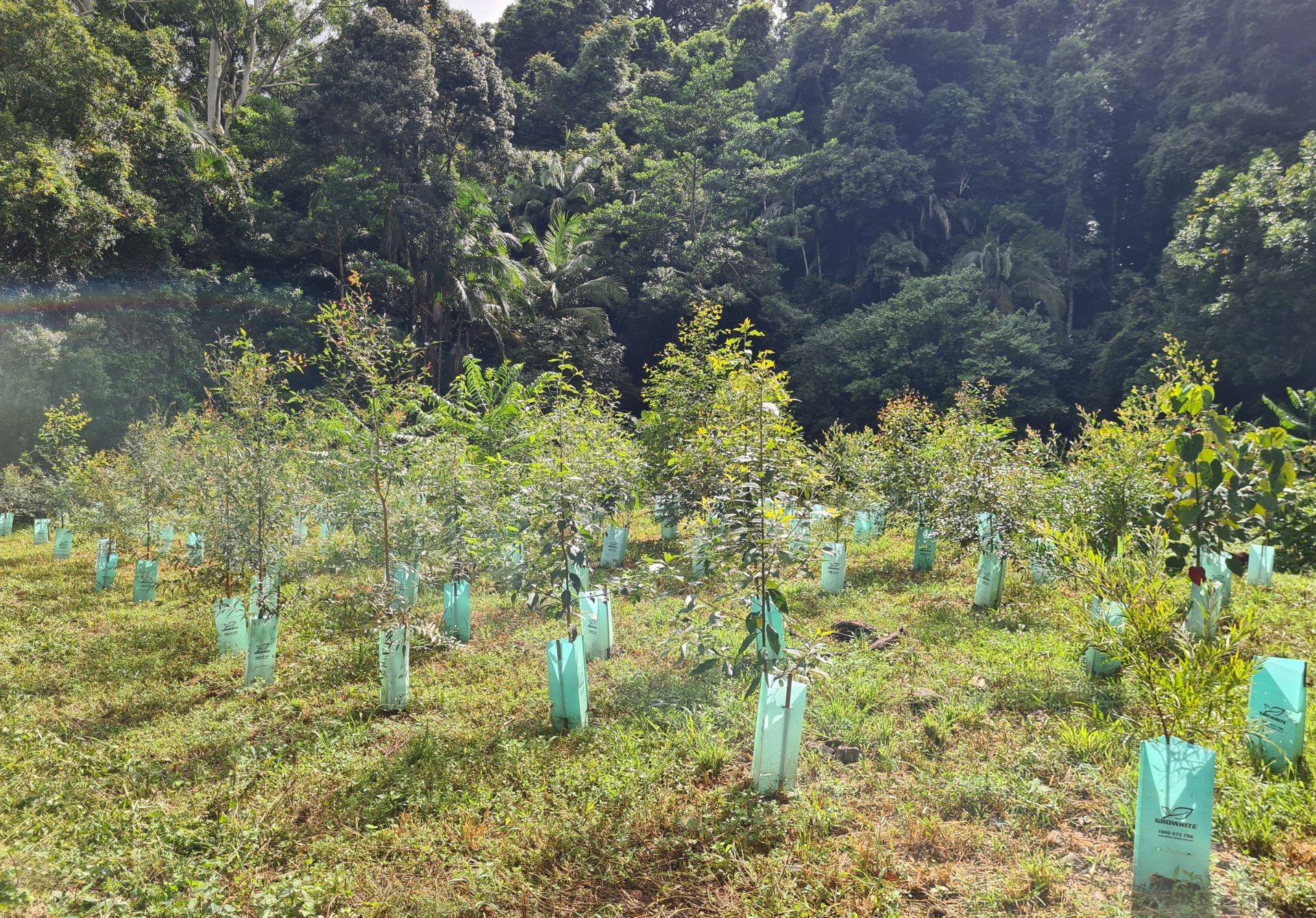In the Sunshine Coast Hinterland, rich pockets of rainforest, eucalypt woodland, and riparian corridors form a tapestry of biodiversity. A fragmented ecosystem occurs when large, continuous habitats are broken into smaller, isolated patches, often by roads, farmland, or urban development. Over the past century, land clearing, urban development and agriculture have created exactly this type of fragmentation, breaking ecosystems into disconnected pieces. This disrupts natural processes, threatens native species and makes our landscapes more vulnerable to invasive plants and climate extremes. At Hinterland Bush Links, reconnecting these broken landscapes is at the heart of our work – and here’s why it matters.
Maintaining Biodiversity and Species Survival
When habitats are split into smaller fragments, wildlife populations become isolated. This isolation reduces genetic diversity, lowers resilience to disease and environmental change, and limits access to food, shelter, and breeding sites. By reconnecting fragmented ecosystems through strategic wildlife corridors, revegetation and habitat restoration, species can move more freely across the landscape.
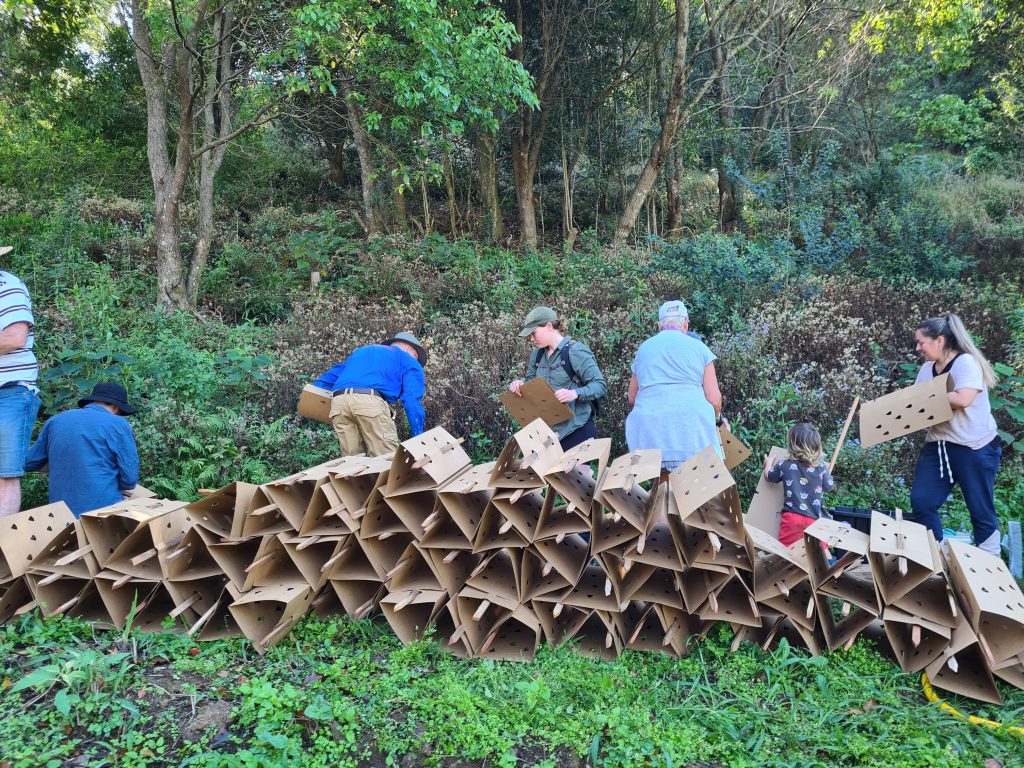
Fruit doves illustrate why these connections are vital: species like the Wompoo, Superb and Rose-crowned Fruit-Doves need large, continuous forest tracts for food and safe travel. Small, isolated remnants often cannot support them, which threatens both the birds and the rainforest plants they disperse. Restoring broad bands of forest helps maintain these ecological links, supporting fruit doves and the plant species they sustain.
Strengthening Ecosystem Resilience
A connected landscape is a resilient one. Large, linked ecosystems are better able to recover from disturbances such as bushfires, floods or pest outbreaks. In a fragmented system, a single extreme event can wipe out an isolated population or degrade a patch of habitat beyond recovery. By creating green corridors and expanding core habitat areas, Hinterland Bush Links helps buffer ecosystems against these shocks. Restoration projects also enhance ecological functions like pollination and seed dispersal – processes that require mobile species and interconnected habitats to operate effectively.
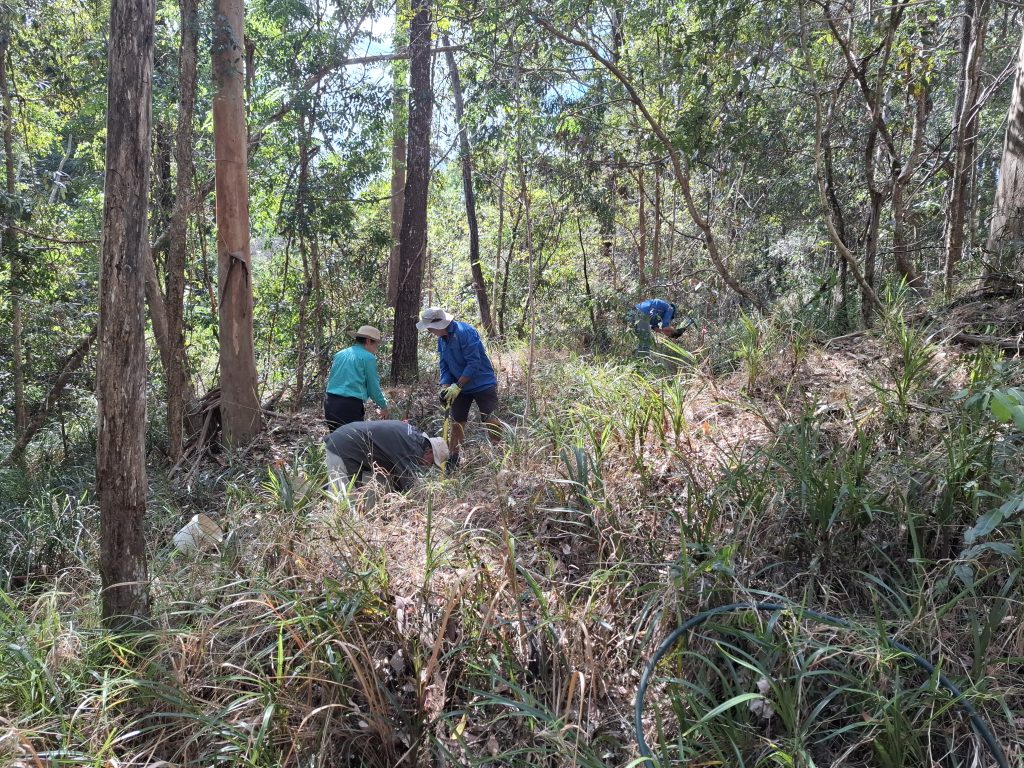
Facilitating Climate Change Adaptation
As temperatures rise and weather patterns shift, many species need to move to survive. This might mean travelling to higher altitudes or cooler areas or following changes in the distribution of food plants. Fragmented habitats can trap species in unsuitable environments, increasing their risk of decline or extinction.

By connecting ecosystems across the Sunshine Coast hinterland, Hinterland Bush Links provides safe pathways for wildlife to adapt to changing conditions. These connections don’t just benefit iconic species – they also help preserve the intricate web of life that supports ecosystem health, from fungi and insects to top predators.
Spotlight on Luma – Wildlife of the Month
Luma is a striking Wompoo Fruit-Dove (Ptilinopus magnificus), a jewel of the rainforest canopy. Her feathers shimmer with shades of iridescent purple, green, and blue, and her bright red eyes make her instantly recognizable—though she is often shy and hard to spot among the leaves.
Luma spends her days quietly moving through the treetops, feasting on native fruits and berries. In doing so, she plays a vital role in the rainforest, dispersing seeds that help new trees and plants grow. Her soft, melodic cooing echoes through the forest, signaling her presence to other doves while blending seamlessly into the sounds of the bush.
She thrives in connected patches of rainforest, where food is plentiful and predators are few. Luma’s life is a reminder of the importance of habitat restoration and tree planting, showing how even a single bird contributes to the health and resilience of our forests.

Looking Ahead
With every weeding and tree planting event, we’re helping reconnect the landscape — creating thriving habitat corridors where wildlife like Luma can feed, nest, and move freely. You can be part of this story too. Join us in our community restoration events and follow the links below to see how you can help bring the bush back to life.
